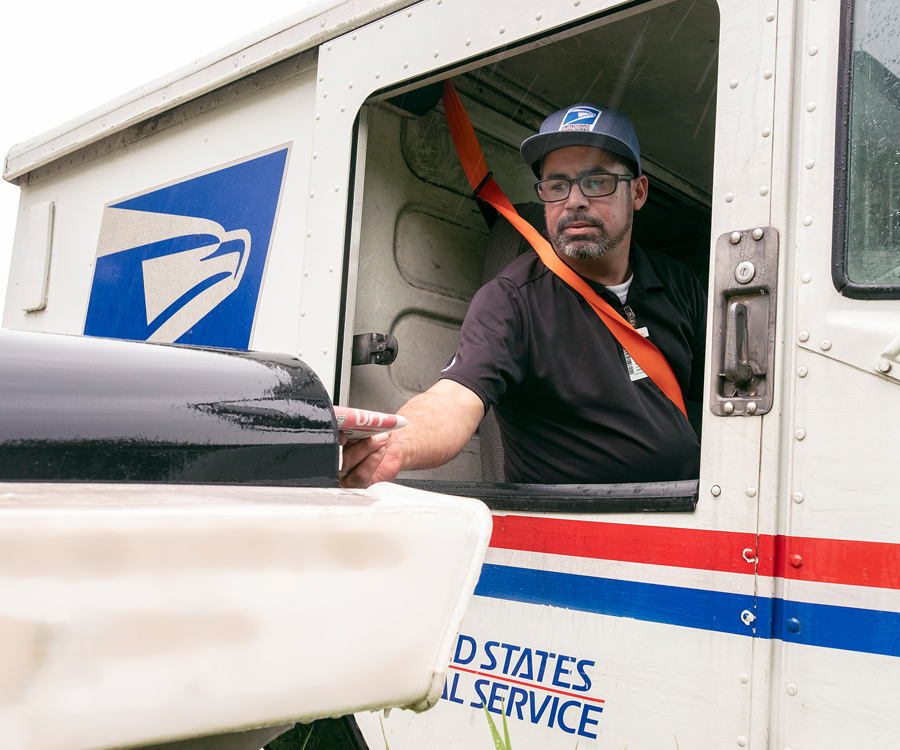Rural carriers, like all Postal Service employees, make unique contributions to the organization’s business.
As the job title implies, rural carriers traditionally serve in rural communities, as well as suburban areas and even some urban centers. This helps USPS to fulfill its “universal service obligation” to serve all customers in the United States.
The history of rural carriers goes back to the 1890s, when the Post Office Department established rural free delivery. Previously, residents of rural areas had to travel to the nearest Post Office to pick up their mail or pay a private carrier for delivery.
More than a century later, the Postal Service often is the only delivery option for customers in rural areas.
This is why rural carriers are sometimes referred to as a “Post Office on wheels.” They offer all the services performed over the counter at USPS retail sites, including selling stamps and money orders, accepting Priority Mail, and providing services such as signature and delivery confirmation.
Rural carriers also play an important role in the “last mile” package business, which refers to parcels that enter the USPS network at local Post Offices and are then delivered to customers’ homes.
USPS has about 69,600 rural carriers and 61,500 part-time rural carriers who serve 44.7 million rural delivery points.
Rural carriers travel about 3.7 million miles each day, and many carriers use their own vehicles to make deliveries.
